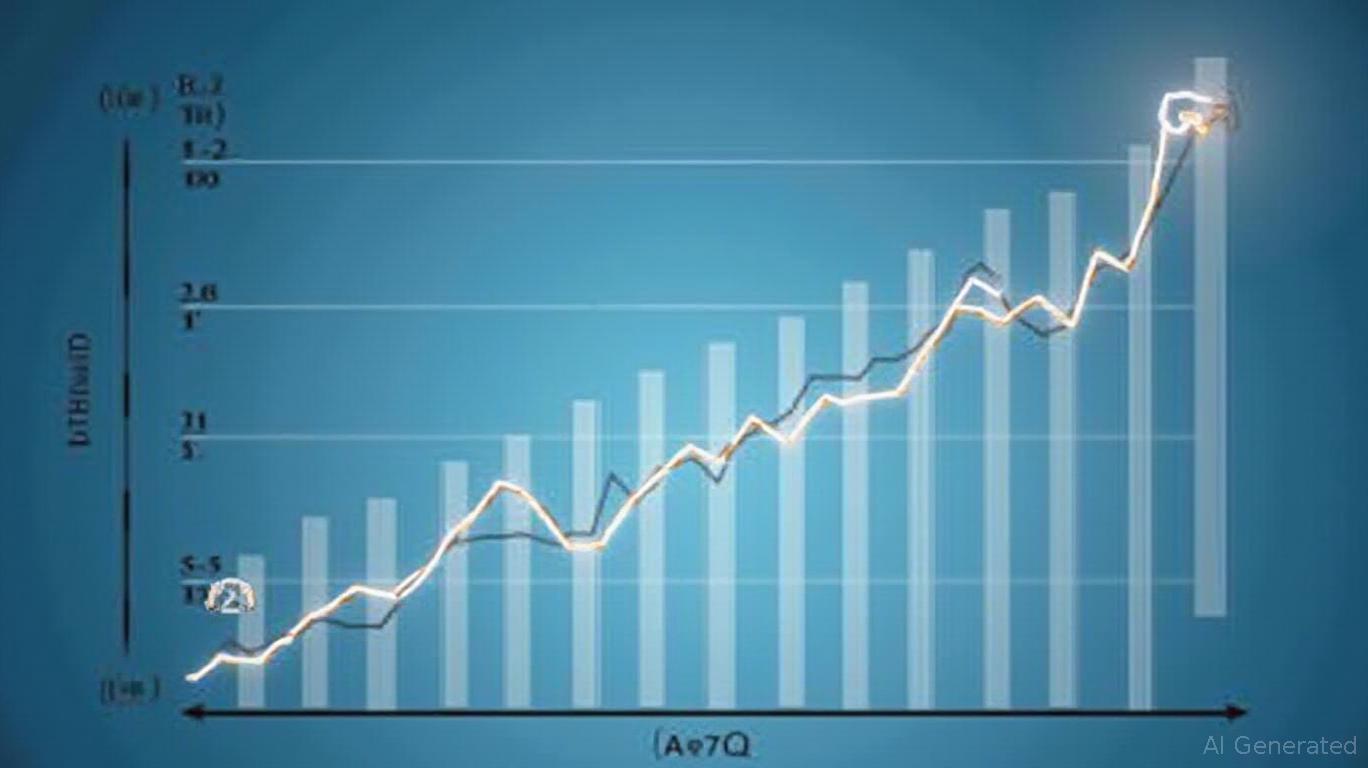Trinity Capital's Dividend Machine: Can It Keep Chugging Along?
Investors seeking high yields are often drawn to businesses that can deliver consistent payouts even when the going gets tough.
(NASDAQ: TRIN) is one such company, boasting a 14.24% dividend yield and 22 consecutive quarters of maintaining or increasing its dividend. But with interest rates rising and liquidity challenges looming, the question remains: Can Trinity Capital sustain this dividend juggernaut? Let's dig into the numbers.
The Dividend Track Record: A Solid Foundation
Trinity Capital's dividend discipline is its strongest selling point. The Q2 dividend of $0.51 per share, unchanged from Q1, covers 102% of its net investment income (NII) of $0.52 per share. That's a narrow margin, but it's still in the green. The company's mandate to distribute 90-100% of taxable income ensures shareholders get a chunk of its profits, and its regulated investment company (RIC) status adds a tax incentive to keep payouts flowing.
Yet, there's a catch. The dividend yield is sky-high—14.24%—which often signals risk. High yields can mean investors are skeptical about future payouts, pricing the stock lower. To justify this yield, Trinity needs to keep its NII robust. Let's see if the fundamentals hold up.
Financial Performance: Growth vs. Reality
Trinity's Q1 2025 results were a mixed bag. Total investment income soared 29.5% year-over-year to $65.4 million, a promising sign of top-line growth. But net investment income barely kept up with the dividend, and earnings per share ($0.43) fell short of expectations. Revenue also missed estimates, dropping below the $67.46 million forecast.
The culprit? Rising costs and a tough macro environment. The company's net asset value (NAV) per share dipped to $13.05 from $13.35 in late 2024, primarily due to debt repayments. While NAV rose overall to $833.4 million, the per-share decline is a red flag for equity holders.
Liquidity and Leverage: A Balancing Act
Trinity's liquidity is a key concern. At $216.4 million as of March 2025—comprising $8.4 million in cash and $208 million in credit facilities—the company appears well-funded. But its leverage ratio jumped to 116%, up from 108% in late 2024. That's a worrisome trend. High leverage amplifies risk, especially in a rising-rate environment, as interest expenses could squeeze NII.
The company has leaned on its equity ATM (at-the-market) program to raise capital, issuing shares at an average price of $15.61 in Q1. While this maintains liquidity, it dilutes existing shareholders. The recent $10.5 million ATM raise in April further underscores Trinity's reliance on equity to fund growth—a strategy that could backfire if the stock price falters.
Portfolio Strength: Diversification and Discipline
Trinity's portfolio is its secret weapon. With 77.9% in first-lien loans and 76.9% in floating-rate debt, the company is prioritizing safer, income-producing assets. The weighted average risk rating of 2.9 (on a scale where lower is better) suggests prudent underwriting.
New investments in Q1 totaled $94.8 million across six companies, while exits and repayments brought in $157.1 million. This balance shows Trinity is active in both deploying capital and realizing gains. The $1.79 billion portfolio is diversified across five segments, including tech lending and life sciences, which are growth areas in today's economy.
The Bottom Line: A High-Yield Gamble Worth Taking?
Trinity Capital's 14.24% dividend is tantalizing, but investors must weigh the risks. The narrow NII-to-dividend buffer, rising leverage, and reliance on equity raises are clear vulnerabilities. However, the company's growth in investment income, disciplined underwriting, and investment-grade rating from Moody's provide a counterbalance.
Historically, a strategy of buying TRIN on earnings announcement days and holding for 30 days since 2020 has delivered a 14.1% compound annual growth rate (CAGR), though with a maximum drawdown of 26.3%. This underscores the potential rewards but also the volatility inherent in the strategy.
For income-focused investors willing to tolerate volatility, Trinity could be a candidate—but only if they keep a close watch on liquidity metrics and leverage. The stock's price performance over the past year will give clues about sentiment, while the dividend yield's stability is a key indicator of confidence.
Action Items:
1. Monitor Trinity's leverage ratio. A sustained climb above 120% would be a red line.
2. Track its NII coverage ratio. It needs to stay above 100% to avoid dividend cuts.
3. Watch for further ATM share issuances, which could signal dilution or a lack of organic growth.
In a world of low yields, Trinity's dividend is a siren song. But like all high-yield plays, it's a gamble. For the right investor—one who can stomach the risks—it might just be worth the ride.
Invest at your own risk. Always do your due diligence.

Comments
No comments yet